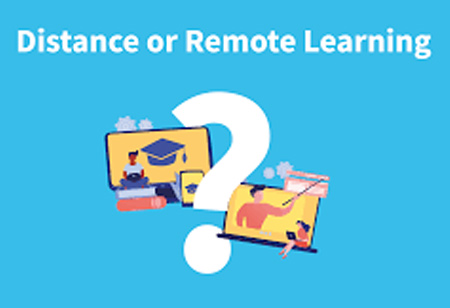THANK YOU FOR SUBSCRIBING
Be first to read the latest tech news, Industry Leader's Insights, and CIO interviews of medium and large enterprises exclusively from Education Technology Insights
Key Distance Learning Technology to Eye on
As educational institutions deploy distance learning, they must ensure the right technologies to best help student learning.

By
Education Technology Insights | Friday, April 09, 2021
Stay ahead of the industry with exclusive feature stories on the top companies, expert insights and the latest news delivered straight to your inbox. Subscribe today.
As educational institutions deploy distance learning, they must ensure the right technologies to best help student learning.
FREMONT, CA: Distance learning is a form of education in which instructors and learners are physically separated, and technology facilitates interactions. While there are many forms of distance learning, like hybrid learning and combined learning, each model aims to incorporate a learning component and needs a solid technology foundation to be successful. Here is how distance learning technology can positively affect student learning and technology must-haves to get started.
• Learning Management Systems
A learning management system is a software for offering course materials, assigning tasks, tracking student progress, delivering feedback, sharing announcements, and posting grades. Several learning management systems are cloud-powered, enabling students to access content through web login. The LMS is the basis of the distance learning technology stack and combines with collaboration and productivity tools.
• Collaboration Tools
[vendor_logo_first]One of the biggest hurdles with distance learning is facilitating virtual collaboration. Collaboration technology tools can help instructors share information with students through digital whiteboarding, videoconferencing, messaging, file sharing, and virtual office hours. Instructors can schedule classes and encourage student collaboration in the video chat and interactive polling. Using collaboration technology, instructors can virtually offer the face-to-face communication that students usually experience in a traditional classroom.
• Digital Simulations
Digital simulations are experiential learning in which an instructor generates online, scenario-based environments for students to navigate practical skills. This is popular in health and human services programs, as it enables instructors to develop students’ skills without being in a hospital setting. Much like a video game, an educator can assign learners to a digital simulation. They communicate with a patient and respond with specific actions as if it were real life.
Check Out This : Hospitality Business Review
• Assistive Technology
As described, assistive technology is needed in distance learning courses to help students with physical and learning disabilities. Assistive technology is a piece of equipment, software program, or product system that is leveraged to increase, maintain or enhance the functional potentials of persons with disabilities.
See Also: Top Education Technology Consulting/Services Companies







